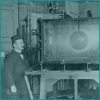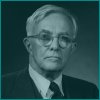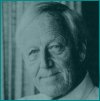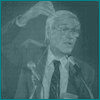|
Plasma
Introduction
History I
History
II
Technical
I
Technical
II
Further
FAQs The
Electric Universe Science
and Philosophy Ancient
Testimony
Cutting Edge The
Way Forward Latest
News
Video |
 | |  |
 |
| A Brief History of Plasma I |
|
|
| |
|
|
| Kristian Birkeland (1867-1917), Norway |
|
|
| |
|
|
|
Birkeland was among the first to speculate
that the Northern Lights were charged particles ejected
from the Sun, captured by the Earth's magnetic field,
and directed towards the polar atmosphere. To prove
this theory, Birkeland performed his famous 'Terella'
experiments where he artificially created the aurora
in the laboratory. His theories were initially laughed
at, and it is only now in the space age that measurements
from satellites are proving him correct. After a controversy that raged for one quarther of a century, the electric currents that flow through space are named after him – Birkeland currents.
"It seems to be a natural consequence of our point of view to assume that the whole of space is filled with electrons and flying electric ions of all kinds, and we have assumed that each solar system in evolution throws off electric corpuscles into space. It does not seem unreasonable therefore to think that the greater part of the material masses in the universe are not in the solar sytems or nebulae but in empty space."
Kristian Birkeland
Significantly, his approach to science
was broad, comprising observation and laboratory experimentation
in addition to mathematical modelling. He was not content
with a merely theoretical approach, despite having trained
as a mathematician himself.
He is probably Norway's greatest ever
scientist, and many of his works are still used as reference
materials. He is recognised
for bringing plasma and electromagnetism into cosmology,
but while many of his ideas are
widely accepted, his cosmological theories are less
well known. He died aged 49 just when a working
committee was in the process of nominating him for the
Nobel Prize in Physics.
Birkeland has been called the first 'space scientist'. He was a full professor of physics at the University of Oslo aged just 31. |
|
 |
| |
|
|
| Sydney Chapman (1888-1970)
was regarded as a leader in the field of interplanetary
magnetospheric physics for a while after the death of
Birkeland. He took an approach very similar to that of
Big Bangers, relying heavily on mathematical models, and
refused to even discuss many of Birkeland's ideas. According
to his models, currents were confined to a sphere that
extended little beyond the Earth. He failed to recognise
the complex three dimensional relationship between the
Earth's magnetosphere and the currents flowing from the
Sun. He proposed, in contradistinction to Birkeland's
ideas, that currents were restricted to the ionosphere,
and that the Earth moved through a vacuum. He was wrong. |
|
"Gravitational
systems are the 'ashes' of prior electrical systems."
Hannes Alfvén |
| |
|
|
| Irving Langmuir (1881-1957), USA |
|
|
| |
|
|
|
Langmuir (1881-1957) was the first to
use the term 'Plasma' in 1927, borrowing it from Blood
Plasma to describe the almost life-like and self-organising
behaviours of a plasma when in the presence of electrical
currents and magnetic fields.
He discovered Plasma Sheathes, now called
Double Layers, having observed the electrons and ions
of a plasma separating during experimentation. DLs are
one of the most important features of plasma behaviour.
He also defined and explained the term
'valence' as part of his description of the atom. Few
textbooks, however, recognise the influence that Langmuir
had on the development of our understanding of the nature
of the atom.
He became the first 'non-academic' chemist
to receive the Nobel Prize, an accomplishment he realised
in 1932. Langmuir probes, which can be used in space,
are named after him.
[There] are cases where there is no dishonesty involved but where people are tricked into false results by a lack of understanding about what human beings can do to themselves in the way of being led astray by subjective effects, wishful thinking or threshold interactions. These are examples of pathological science. These are things that attracted a great deal of attention. Usually hundreds of papers have been published upon them. Sometimes they have lasted for fifteen or twenty years and then they gradually die away.
Irving Langmuir
|
|
 |
| Hannes Alfvén (1908-1995) - The Father
of modern Plasma Physics, Sweden |
|
|
| |
|
|
|
Alfvén (1908-1995) is generally regarded
as the Father of modern Plasma Physics. He continued
the work of Birkeland, feeling very much in spirit with
him, and eventually won a Nobel Laureate for his ground-breaking
contributions. He was not always highly regarded by
the scientific establishment because of his controversial
ideas, however, and suffered no little condescension
and ridicule in his lifetime.
In fact, it now seems bizarre that he
wasn't awarded the Nobel Prize until 1970, especially
considering his many fundamental accomplishments. For
some time he was forced to publish in journals that
did not enjoy international readership. His ideas finally
became known to the general scientific community through
his ground-breaking book, Cosmical Electrodynamics,
published by Oxford University Press in 1950.
Alfvén took a practical and intuitive
approach to science, insisting that theories of cosmological
phenomena must agree with laboratory experiments. (The
definition of 'laboratory' being broadened to include
experiments in space.) Having started out as an engineer,
his methods were in direct opposition to the approach
generally favoured by Big Bangers, that of starting-out
from idealised mathematical principles.
In 1937 Alfvén proposed that our galaxy
contained a large-scale magnetic field and that charged
particles moved in spiral orbits within it, owing to
forces exerted by the field. Plasma carried the electrical
currents which create the magnetic field.
"In order to understand the phenomena in a certain plasma region, it is necessary to map not only the magnetic but also the electric field and the electric currents. Space is filled with a network of currents which transfer energy and momentum over large or very large distances..."
Hannes Alfvén, Cosmology in the Plasma Universe: An Introductory Exposition, 1990.
While many of Alfvén's theories are
now well known, like those of Birkeland, the cosmological
implications of his work also remain to be fully recognised.
Ironically, some have put this down to the very simplicity
of many of these ideas.
"The peer review system is satisfactory during quiescent times, but not during a revolution in a discipline such as astrophysics, when the establishment seeks to preserve the status quo."
Hannes Alfvén
|
|
 |
| |
| "I
have never thought that you could obtain the extremely
clumpy, heterogeneous universe we have today, strongly
affected by plasma processes, from the smooth, homogeneous
one of the Big Bang, dominated by gravitation."
Alfvén |
|
| Winston H. Bostick (1916–1991), USA |
|
|
| |
|
|
Bostick coined the term Plasmoid. He discovered plasma focus and plasma vortex phenomena, and he simulated cosmical astrophysics with laboratory plasma experiments showng that Hubble expansion can be produced with repulsive mutual induction between neighboring galaxies acting as homopolar generators. Much of his work is not as yet accepted by mainstream science.
"...my experimental work in plasma physics for the last 36 years has shown that under many different circumstances plasmas containing nonrelativistic or relativistic electrons can spontaneously organize themselves into force-free, minimum-free-energy vortex filaments of a Beltrami morphology."
Winston H. Bostick
Eugenio Beltrami mentioned in the quote above was an 18th century Italian mathematician who developed a powerful differential equation that can be used to mathematically describe the morphology of helically twisted filament pairs, as seen in DNA and Birkeland currents. Bostick's work has been repeatedly verified by Hannés Alfven and Anthony Peratt.
The compact energetic activity we witness at the center of most galaxies almost certainly results from the plasma focus phenomenon (as opposed to the mathematical abstractions called black holes favoured by popular science), hence the bright glow we occasionally get to see through more powerful telescopes.
Thunderbolts article |
|
 |
| |
|
|
| David Bohm (1917-1992), USA |
|
|
| |
|
|
| Bohm was the
plasma theoretician and cosmologist who discovered the
instabilities and resistivity of magnetized plasmas that
now bear his name. |
|
"The universe is an unending
transformation in flux whose previous states we are
not privileged to know." David Bohm
d Bohm
|
| |
|
| There are many others who probably
should be mentioned, but this web site aims only
to serve as an introduction to the emerging paradigm. |
|
|
| |
|
|
|
Today, a growing body of scientists, engineers, and
independent researchers are continuing the work of these
pioneers. They have taken up the gauntlet in defiance
of some of the more entrenched thinking that still permeates
the mainstream. See the links page for further details.
|
|
|
| |
|
|
| Summation |
|
|
| |
|
|
Both Hannes
Alfvén and Irving Langmuir won Nobel Laureates for their
work, and Kristian Birkeland probably would have done
had he lived long enough. It seems unfortunate, therefore,
that their work in cosmology, and the implications of
their work in this field, remain largely unrecognised.
Alfvén's criticism of the Big Bang, it has to be said,
certainly rankled with some of the powers that be. Notably, all of the plasma pioneers had a rebellious streak in them and refused to parrot orthodoxy.
"To try to write a grand cosmical drama leads necessarily to myth. To try to let knowledge substitute ignorance in increasingly larger regions of space and time is science."
Hannes Alfvén
|
|
“I have no trouble publishing in Soviet astrophysical
journals, but my work is unacceptable to the American
astrophysical journals.” Hannes Alfvén |
|  |
 | |
 | |
